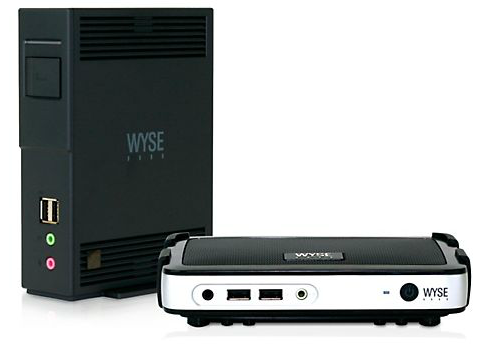 Google and VMware recently announced a joint venture to bring traditional Windows applications to Chromebooks thanks to the cloud and virtualization. Having the ability to run Windows applications on a Chromebook drastically increases the versatility of a Chromebook for those that have legacy applications that won’t be coming to the web anytime soon or applications that are too complex for the simplicity of Chrome OS. Besides Google and VMware’s upcoming solution, Chromebooks are perfect for businesses looking to move streamline their desktops and move to a virtual desktop solution.
Google and VMware recently announced a joint venture to bring traditional Windows applications to Chromebooks thanks to the cloud and virtualization. Having the ability to run Windows applications on a Chromebook drastically increases the versatility of a Chromebook for those that have legacy applications that won’t be coming to the web anytime soon or applications that are too complex for the simplicity of Chrome OS. Besides Google and VMware’s upcoming solution, Chromebooks are perfect for businesses looking to move streamline their desktops and move to a virtual desktop solution.
Virtual Desktop Infrastructure (VDI) is simply taking a user’s physical desktop and turning it into a virtual one that can be accessed from multiple devices. The full desktop is ran remotely, using remote server resources, and then sent to the client for use.
One of the ways to access your virtual desktop is by something called a Thin Client or a Zero Client. Think of Thin Clients as bare-bones Operating Systems based on either Windows or Linux that run on top of bare-bones hardware. The Thin Client OS normally consists of a web browser, some basic user management, some sort of updating mechanism, and of course an application to connect you virtual desktop. This could be VMware View, Citrix, or Microsoft’s Remote Desktop. Zero Clients, also known as an Ultrathin Client, have an even smaller footprint, normally booting right into the remote connection software instead of a full blown Operating System that would normally be found on a Thin Client.
If you’ve been around the IT world for a few decades, this type of computing model might remind you of mainframe computers and their accompanying dummy terminals. Yes, we’ve gone full circle in the end user computing world.
So where do Chromebooks come in? Well, back in November, VMware’s VDI product, Horizon View, was updated to version 5.3. One of the key components of version 5.3 was the ability to do away with application based clients. Previously if you wanted to access your virtual desktop, you had to have a connection client (think remote desktop software) installed on your Thin Client, mobile device, or computer, if you wanted to use a virtual desktop. Version 5.3 nixes that requirement by adding an HTML web client to access virtual desktops. Since you cannot install the VMware View client on a Chromebook, the HTML solution is right up the Chromebook alley.

Can Chromebooks act as a viable Thin Client for the business sector?
I believe so. In fact, I believe they are the best solution available if you’re looking to get into VDI. Chromebooks are cheaper, easier to update, easier to manage, and just as secure as traditional Thin Clients and VDI solutions.
Let’s look at the cost. Normal Thin Clients, like the Dell Wyse P25 (pictured above), are going run you $369 each, whereas the Acer C720 Chromebook is going to run you $249, saving you $120 per machine. A keyboard and mouse are included with Dell’s solution, but you’ll still need to spring for a monitor. Depending on what size monitor you get, you could easily have $500 tied up into a non Chromebook setup. On the flip side, if the small monitor of a Chromebook makes work a bit of a drag, buying an external monitor, keyboard, and mouse still end up being cheaper than the total cost of a traditional Thin Client.
Chromebooks are mobile computers. Does Dell offer a Thin Client laptop? Yes. A Dell Wyse Laptop Thin Client costs $838. I’m not even going to waste my time explaining why this is a bad idea. Moving on.
When it comes to updating the Dell Wyse P25, IT administrators will have to tackle that headache themselves and believe me, it’s a bit of a pain. Whenever an update is available, you have to download the update yourself, setup a local FTP server repository, and make sure your clients have previously been configured on the whereabouts of their local update server. While all of this might not seem too hard, it’s much harder than doing nothing at all, which is what happens with Chromebooks. As you know, Chromebooks update themselves without the end user even having to do anything at all.
When it comes to client management, both the Wyse Device Manager and Chromebook Management Console provide similar functions of asset tracking, device configuration, and customization. Wyse Device Manager (WDM) is a bit more powerful, but takes more time to get up and running. Power users will most likely prefer WDM over Google’s Chromebook management tool. However when you’re looking to streamline your IT with simplicity, the Chromebook Management Console covers all of the essentials as you can see below.
As for security, Thin Clients do a decent job minimizing the attack vector for end users. All user data is saved securely in the data center and all applications run from within the data center. That doesn’t mean you should completely dismiss end point client client vulnerabilities. When it comes to security, Chrome OS was proven to be unhackable at last year’s Pwnium 3 competition. While I’m sure that the embedded Windows or Linux solution is secure on traditional Thin Clients, they just aren’t updated nearly as often as a Chromebook. When a patch for VMware Horizon View becomes available, all HTML clients (Chromebooks) are immediately updated to the latest secure version after the server has been updated. With a Dell Wyse Thin Client, you’ll have to wait until Dell provides a software update, which normally takes months.
How can you get started with Chromebooks and VDI?
First and foremost, VDI is something for larger businesses. This isn’t for home users or small businesses. Virtual desktops just don’t become cost effective until you’re doing it on a larger scale, because the back-end infrastructure is very costly. If you already have that out of the way and are looking to move into virtual desktops for your environment, you’ll need VMware Horizon View Horizon 5.3 to begin working with Chromebooks and VDI.
The HTML Access Web Portal installer isn’t part of the standard install, but can be easily added by grabbing the latest VMware Horizon View Feature Pack. You’ll need to install the HTML Access Web Portal on your View Connection server. Next, be sure to grab the Remote Experience Agent, which you’ll need to install on your View desktop template and then force a Recompose for your desktops. The last step is to enable a desktop pool for HTML client access, which is just simply checking a box on your pool configuration panel.
Now when you visit your View Connection Server’s web address, you’ll be greeted with the following options: a) Download and install the View client b) Launch the web client. That’s it. You can now use a Chromebook to access Windows Virtual Desktops.
Desktop virtualization is a hot topic in the business sector. Being able to access your work applications and data from anywhere in the world, from any device, is a must as we continue to move in the direction of mobile computing. Chromebooks were built for mobility and accessibility. Chromebooks as a Thin Client for VDI seems like natural progression.
Have you considered using Chromebooks for VDI? Let me know in the comments.












